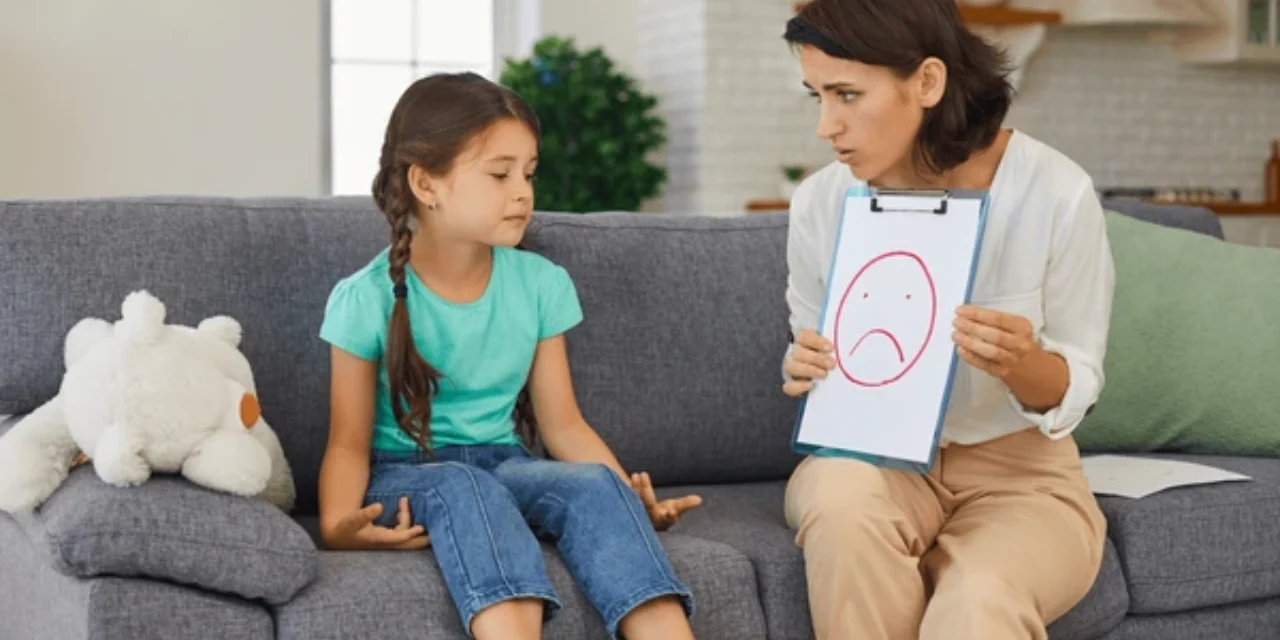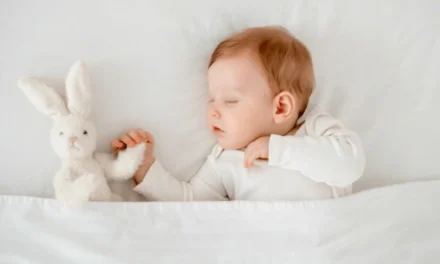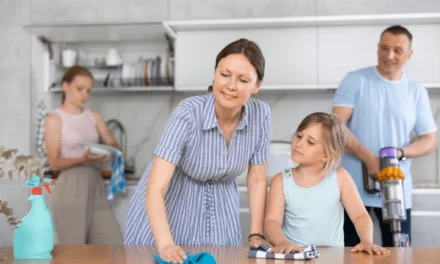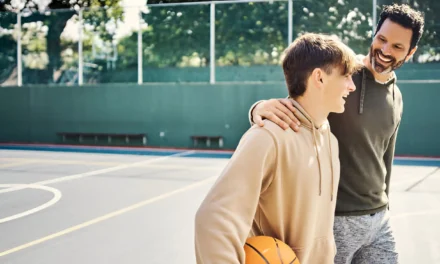Anxiety is a common challenge many children face. It affects their physical, behavioral, and emotional health. As parents, it’s vital to have strategies to help our kids deal with these feelings. In this article, we’ll look at eight effective ways to manage anxiety in a healthy way.
Anxiety in children shows up in different ways. It can cause physical symptoms like headaches and stomachaches. It can also lead to behavioral changes, such as avoiding certain situations or becoming easily irritated. Understanding the root causes and patterns of your child’s anxiety is the first step. By creating a nurturing environment, teaching coping skills, and seeking professional help when needed, you can help your child manage their anxiety and thrive.
Key Takeaways
- Anxiety in children is a common issue that can impact their physical, behavioral, and emotional well-being.
- Identifying the signs and symptoms of anxiety is crucial for developing effective management strategies.
- Techniques like creating supportive environments, teaching coping skills, and seeking professional support can help children overcome anxiety.
- Parental involvement and open communication are key in helping children build resilience and manage their anxiety effectively.
- A multifaceted approach, combining various techniques, is often the most successful way to address childhood anxiety.
Understanding Childhood Anxiety: Signs and Symptoms
Childhood anxiety can show up in many ways, affecting a child’s body, actions, and feelings. By spotting these signs early, parents can offer the right help and support to their kids.
Physical Symptoms
Anxiety in kids can cause physical signs like a fast heart rate, sweating, shaking, and stomach pain1. These signs can be scary for kids and make it hard for them to do everyday things.
Behavioral Indicators
Behavioral signs of anxiety in kids include being restless, having trouble focusing, and avoiding certain situations1. They might also throw tantrums or cry in social situations, especially if they have social anxiety disorder1.
Emotional Signs
Anxious kids often worry too much, get easily upset, and feel scared1. They might also not want to leave their parents or caregivers, a sign of separation anxiety disorder1.
Anxiety disorders in kids can be different in how bad they are and how long they last2. Some kids might have specific fears, while others might worry about everything or have panic attacks1. It’s key to spot these early and offer the right support to help kids deal with their anxiety2.
| Anxiety Disorder | Symptoms |
|---|---|
| Separation Anxiety Disorder | Worry about parents or caregivers getting sick or dying, refusing to leave home or go to school, fear of sleeping or being alone, nightmares about separation, physical symptoms like headaches or stomachaches before an upcoming separation1 |
| Social Anxiety Disorder | Avoiding most social situations, physical symptoms like shaking, sweating, or trouble breathing in social situations, tantrums and crying in social situations in young children, fear of others seeing their anxiety and judging them for it1 |
| Selective Mutism | Ability to speak in some situations but not others, problem lasting for at least a month, issues with school and social activities1 |
| Generalized Anxiety Disorder | Restlessness, feeling on edge, feeling tired much of the time, problems concentrating, feeling angry, trouble sleeping1 |
| Panic Disorder | Frequent, unexpected panic attacks that cause physical feelings making them think they are dying or having a heart attack, constant fear of more panic attacks, avoiding places reminding them of an attack1 |
| Obsessive-Compulsive Disorder (OCD) | Obsessions (unwanted thoughts that cause anxiety) and compulsions (rules they feel they must follow to control the anxiety)1 |
| Specific Phobias | Being very afraid of one or more specific things that are not typically considered dangerous, causing disruptions when the child avoids these things1 |
Spotting the signs and symptoms of anxiety in kids is the first step to helping them2. By knowing how anxiety can show up, parents and caregivers can create a safe and caring environment for their kids23.
The Science Behind Children’s Anxiety
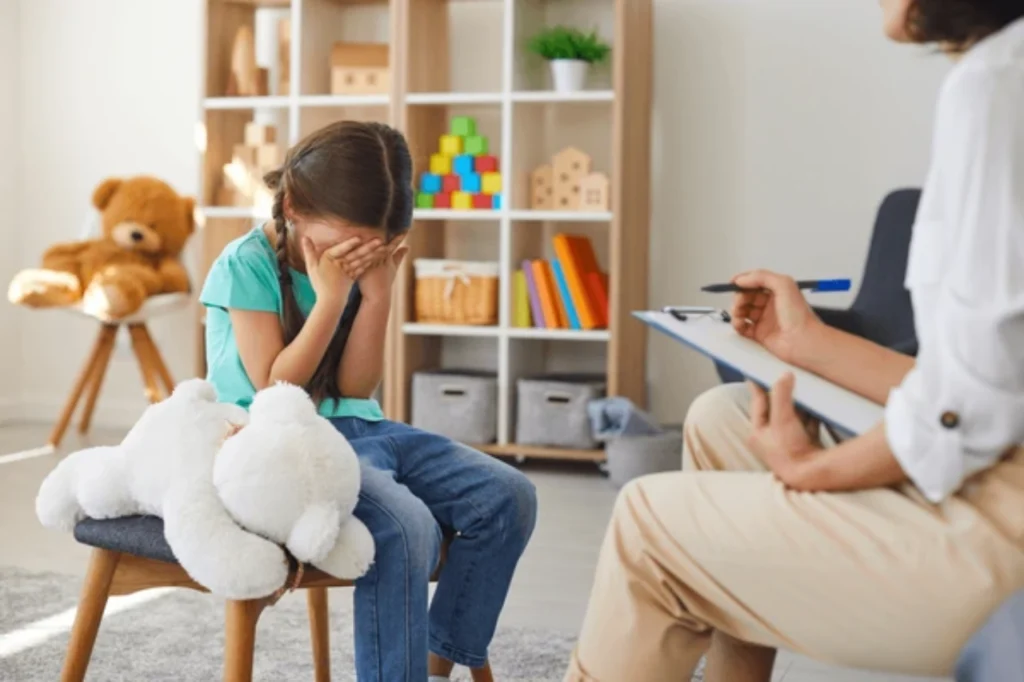
Anxiety in kids is complex, influenced by genes and environment. Neuroscience research4 shows the brain’s amygdala plays a big role. It gets too active in anxious kids, making them more sensitive to threats. This can lead to anxiety disorders4.
Knowing the neuroscience and child psychology of anxiety helps parents understand. It shows why early help and support are key. They help manage anxiety triggers and help kids regulate their emotions4.
- Anxiety disorders are common in Canadian kids and teens4.
- Almost 32 percent of U.S. teens have an anxiety disorder5.
- The top anxiety types in kids are separation, social, and generalized anxiety5.
- Kids with anxious parents are more likely to have anxiety too5.
By grasping the science of childhood anxiety, parents can better support their kids. They can use effective strategies to manage anxiety. This helps kids grow up healthy and resilient4.
Effective Interventions
Studies show a mix of treatments works best for kids with anxiety4. Cognitive Behavioral Therapy (CBT) is top for treating anxiety in young ones. It’s very effective6.
Exposure therapy is also key. It helps kids face their fears in a safe setting. It’s good for many anxiety types, like separation anxiety and social anxiety6.
“Positive family routines, regular exercise, shared family activities, and independent engagement by youth in enjoyable activities are suggested positive steps for managing anxiety disorders in children.”4
Combining CBT and exposure therapy with a supportive home is powerful. It tackles the neuroscience and child psychology of anxiety. This helps kids deal with their anxiety triggers and grow strong46.
Creating a Supportive Home Environment
Creating a calm and nurturing home is key to managing childhood anxiety. By creating safe spaces, parents offer comfort and security7. Clutter can make stress worse and harm health, so keep your home tidy and peaceful7.
Establishing Routines
Having daily routines helps kids feel secure7. Exercise, like running or dancing, lowers stress and boosts mood7. Regular mealtimes, bedtime rituals, and exercise make a family’s life predictable and emotionally healthy.
Family Communication Strategies
Talking openly in the family is key to handling childhood anxiety8. Anxiety affects work, social life, and health, stressing out family members8. Parents should let kids share their fears and listen well, without making things worse8. Positive affirmations around the house can help kids focus on the good, reducing anxiety7.
| Home Environment Strategies | Benefits |
|---|---|
| Creating safe spaces | Provides comfort and security for children |
| Establishing consistent routines | Reduces uncertainty and fosters emotional well-being |
| Promoting open communication | Allows children to express fears and worries, improves family dynamics |
By using these strategies, parents can make a supportive home. This helps manage childhood anxiety and boosts well-being78.
“Providing a safe, nurturing, and structured home environment is essential for helping children manage anxiety and thrive.” – Dr. Sarah Thompson, Child Psychologist
Deep Breathing Exercises for Kids
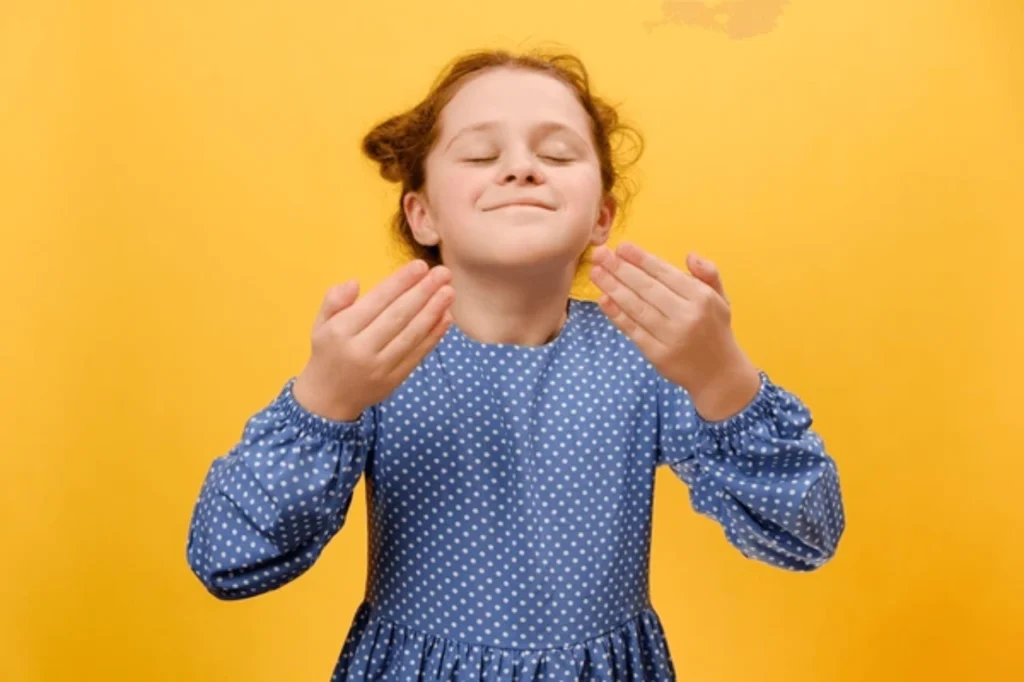
Teaching kids deep breathing can help them deal with anxiety and stress. Deep breathing exercises help kids relax by lowering their heart rate and blood pressure. This shifts them from being stressed to feeling calm910.
Parents can make deep breathing fun by using bubbles, stuffed animals, or DIY crafts9. Techniques like Triangle, Square, and Star teach kids to breathe deeply and mindfully9.
- Simple counting exercises like “Breathe in for 5, hold for 5, breathe out for 10” help kids control their breathing10.
- Visualizations like “color breathing” or animal-inspired breaths make it fun and engaging9.
- Using deep breathing in school, like the Sesame Street Belly Breathe Video, helps kids stay calm9.
Regular deep breathing can lower anxiety and depression risks in kids. It also boosts their energy and lowers blood pressure10. By making it a daily habit, parents give kids tools to handle stress10.
| Breathing Technique | Purpose |
|---|---|
| Bunny Breaths | Calming and grounding |
| STAR Breaths | Energizing and uplifting |
| Square Breathing (Box Breathing) | Reducing stress and anxiety |
| Rainbow Breaths | Promoting emotional awareness and expression |
“Four deep breaths can significantly reduce a child’s physiological arousal, according to a recent Stanford study.”10
By adding different deep breathing techniques to their day, parents help kids manage stress910.
Mindfulness and Meditation Techniques
Mindfulness and meditation are great for kids with anxiety. They help kids control their feelings, feel less stressed, and stay well11. Studies show that Mindfulness-Based Stress Reduction (MBSR) and Mindfulness-Based Cognitive Therapy (MBCT) really help kids feel better11. A 2014 study also found that mindfulness meditation can slightly to moderately lower anxiety and depression in kids11.
Age-Appropriate Meditation Games
To keep kids interested in meditation, parents can use fun games and activities. “Sitting Still Like a Frog” is a great game where kids focus on their breath and body while staying still12. These games help kids calm their minds and deal with worried thoughts12.
Guided Visualization Exercises
Guided visualization is also good for anxious kids. Kids imagine peaceful places like a calm beach or a green forest12. This helps them forget worried thoughts and feel relaxed12. Doing these exercises often can help kids manage their feelings and feel less anxious over time11.
By adding mindfulness and meditation to their daily lives, kids can learn to handle anxiety better12. These practices improve how kids feel, think, and do physically, helping them face childhood challenges with more strength and peace12.
| Meditation Technique | Benefits for Children |
|---|---|
| Guided Visualization | Promotes relaxation and shift in focus away from anxious thoughts |
| “Sitting Still Like a Frog” | Teaches mindfulness, emotion regulation, and body awareness |
| Mindfulness-Based Stress Reduction (MBSR) | Reduces symptoms of anxiety and panic |
| Mindfulness-Based Cognitive Therapy (MBCT) | Helps manage depression and prevent relapse |
“Meditation can help children develop the skills they need to navigate the challenges of childhood with more resilience and calm.”
The Power of Physical Activity in Anxiety Management
Regular physical activity is a great way to help kids manage anxiety. Exercise boosts mood, improves sleep, and keeps us, all helping our emotional well-being13. Studies also show it can cut down mortality risks by up to 30% for both men and women13.
The Centers for Disease Control and Prevention suggest at least 30 minutes of moderate- to high-intensity exercise daily for 5 days a week13. Doing 2-2.5 hours of such exercise weekly can also lower chronic disease risks13. This can help kids manage anxiety by regulating stress and building emotional strength13.
Aerobic exercise can calm the body’s stress response and help with anxiety13. It also boosts serotonin and norepinephrine, like antidepressants, and makes us feel good13. Plus, it increases BDNF, which can help with anxiety and depression13.
| Exercise Recommendations | Benefits |
|---|---|
Anxiety disorders affect nearly 29% of Americans at some point13. They cost the U.S. $42.3 billion in the 1990s13. Regular exercise can help kids manage anxiety, build resilience, and improve their mental and physical health15.
It’s important to find fun physical activities for kids to do regularly14. Setting SMART goals can keep them motivated and reduce stress14. Even a short 10-minute walk can be beneficial, so it’s key to make physical activity a part of their daily routine14.
By embracing physical activity, parents and caregivers can help kids manage anxiety and live a healthy, active lifestyle15. This can lead to long-term stress relief and better overall well-being15.
Building a Coping Skills Toolbox
Anxiety can be tough for kids, but they can learn to handle it. A coping skills toolbox is a special kit filled with items that help kids calm down and manage their feelings. This approach lets kids take charge of their mental, giving them a sense of control and confidence.
Essential Items to Include
A good coping skills toolbox might have stress balls, fidget toys, coloring books, and calming cards16. It’s key to have different coping strategies because what works for one situation might not work for another16. You can also use visual cues for things like deep breathing or imagining a peaceful place16.
When and How to Use Tools
The toolbox should be easy to find, like in the child’s room or a calm spot16. It’s a good idea to practice using the tools when the child is calm16. This way, they get used to the techniques before they really need them, like during big tests16.
As kids grow, so should their toolbox16. It’s important to check and update it regularly to make sure it still meets their needs16.
| Coping Tool | Purpose | Effectiveness |
|---|---|---|
| Stress Balls | Provide a physical outlet for fidgeting and nervous energy | Highly effective for anxiety management and self-soothing |
| Coloring Books | Promote mindfulness and creative expression | Moderately effective for reducing stress and anxiety |
| Calming Cue Cards | Offer visual reminders of coping techniques | Highly effective for guiding children through anxiety episodes |
Creating a coping skills toolbox is a great way to help kids deal with anxiety. By offering a variety of tools and techniques, parents and caregivers can help kids manage their mental health. This way, kids can learn to handle their feelings and thrive171618.
Using Visual Aids and Calming Cards
Visual aids and calming cards are great for helping kids deal with anxiety. They offer clear guidance and reminders. This makes it easier for young minds to understand and use coping techniques19. Tools like emotion charts and visual schedules help prevent anxiety. Calming cue cards, on the other hand, help reduce anxiety when it happens19.
Every child is different, so a mix of strategies works best19. It’s important to keep trying different things and see what works best for each child19. Tools like visual communication supports and stress kits help kids feel calm and in control19.
- Emotion charts and feeling wheels help children identify and express their emotions visually.
- Calming cue cards with simple instructions for deep breathing or other relaxation techniques can be easily accessed during anxious moments.
- Visual schedules and timers provide predictability and structure, reducing uncertainty that can trigger anxiety.
For kids with autism, visual aids and calming strategies are even more important20. Kids with autism often feel overwhelmed, anxious, and struggle with emotions20. Tools like weighted blankets and visual schedules help them manage their feelings and reduce stress20. By making the environment sensory-friendly and using visual supports, parents and teachers can help these kids feel calm and in control20.
| Anxiety Management Strategies | Description |
|---|---|
| Emotion Charts | Visual tools that help children identify and express their feelings |
| Calming Cue Cards | Simple instructions for relaxation techniques to use during anxious moments |
| Visual Schedules | Provide predictability and structure, reducing uncertainty that can trigger anxiety |
| Weighted Blankets | Promote relaxation and reduce anxiety in children, especially those with autism |
By adding these visual aids and calming cards to a child’s toolkit, parents and teachers can give them the tools they need. These anxiety management tools, visual cues, and self-help strategies help kids face their challenges with more confidence and strength192120.
Anxiety Management Through Creative Expression
Engaging in creative therapies can help children manage their anxiety. Art therapy activities let young minds express and process emotions without words22. Simple acts like drawing or coloring can calm them down. It boosts self-esteem and confidence22.
Music and movement therapies, like dance or playing instruments, release tension and relax22. These creative methods offer kids new ways to communicate and deal with anxiety.
Art therapy has many benefits for kids with anxiety23. It calms the nervous system and opens up brain functions like thoughts and emotions23. It also gives a new view on tough situations23. Plus, it connects people with their inner strength, making them feel alive23.
Art Therapy Activities
- Drawing to express anxiety visually, providing insight into feelings and emotions23
- Creating a collage of calm and safety, to visually represent a safe and relaxing place23
- Visualizing anxiety and its characteristics through artistic expression, helping to understand anxiety better and work towards accessing calmness23
Music and Movement
Creative expression through music and movement is great for managing childhood anxiety24. Art and creative activities release endorphins, dopamine, and serotonin, making us feel good24. They help release pent-up emotions, leading to relief and better emotional health24.
Overall, creative therapies are a powerful way for kids to manage anxiety. They offer new ways to express emotions and relax. This helps kids face anxiety challenges and grow stronger222324.
The Role of Sleep in Managing Anxiety
Getting enough sleep is key for kids with anxiety. Setting up bedtime routines helps the body wind down. This gets the mind ready for sleep25.
Creating a calm bedroom, avoiding screens before bed, and doing relaxation exercises can improve sleep25. Good sleep habits not only lessen anxiety but also boost emotional strength and brain function in kids.
Many kids with anxiety also struggle with sleep problems like insomnia25. Research finds that about 24% to 36% of kids with insomnia have anxiety25. On the other hand, about 27% to 42% of kids with too much sleep have anxiety25. Fixing sleep issues can greatly help manage anxiety in young people.
| Sleep Metric | Impact on Anxiety |
|---|---|
| Insomnia | Prevalence of anxiety disorders: 24% to 36%25 |
| Hypersomnia | Prevalence of anxiety disorders: 27% to 42%25 |
By focusing on sleep hygiene and setting up good bedtime routines, parents can help kids manage their anxiety reduction. Quality sleep is a powerful way to support young people’s well-being.
“Sleep disturbance is a diagnostic symptom for some anxiety disorders, such as GAD and PTSD.”25
It’s important to understand how sleep and anxiety are connected. Research is still learning about this link, helping both doctors and parents25.
Positive Self-Talk and Confidence Building
Helping kids manage anxiety starts with positive self-talk and building confidence. Teaching them to say “I can handle this” helps change anxious thoughts and boosts self-esteem26. A 2019 study found that students who said a positive statement before speaking felt less nervous than those who didn’t26.
Affirmation Techniques
Positive self-talk can really help with feeling better and less anxious27. Using ‘you’ and one’s name in self-talk helps manage thoughts and actions under stress, a 2014 review found26. A 2019 study also showed that positive self-talk with second-person pronouns improved sports performance26.
Building Resilience
Building resilience means praising effort and learning from mistakes. This approach helps kids grow and face challenges with more confidence and less anxiety26. A 2010 study found that optimists have a better quality of life28. Lifestyle changes like exercise and mindfulness can also reduce anxiety and boost positive self-talk26.
If negative self-talk keeps coming back and hurts mental health, it’s time to see a doctor26. It could mean there’s an issue like anxiety, depression, or OCD26. Negative self-talk can lower self-esteem and create a cycle of negative thinking, the College of Cognitive Behavioral Therapies warns26.
By using these positive techniques, parents and teachers can help kids beat anxiety and grow resilient2728.
| Positive Self-Talk | Negative Self-Talk |
|---|---|
| – Lowers depression and anxiety27 – Improves well-being and stress management27 – Boosts confidence and self-esteem27 – Helps achieve goals and reach full potential27 – Reduces risk of self-harm and suicide27 | – Lowers confidence and hinders reaching full potential27 – Instills a belief of inevitable failure27 – Increases stress and anxiety, potentially leading to depression and PTSD27 – Makes dealing with pain more difficult and affects confidence and body image27 |
“Positive self-talk can help individuals feel more in control of their lives and help them achieve their goals.”27
School-Related Anxiety Solutions
School anxiety is common among kids29. It can stem from worries about grades, social life, mental health, and changes after COVID-1929. To tackle this, a mix of strategies is often needed.
Talking openly with parents, teachers, and counselors is key29. It helps understand what’s bothering the child and find ways to cope. Also, setting goals that are reachable can ease the stress that causes anxiety29.
Helping kids face their fears, like speaking in public, is also helpful.29 This method, called exposure therapy, lets kids deal with their fears in a safe place29. Focusing on effort and progress, not just being perfect, can also lessen the stress29.
Anxiety can show up as physical symptoms like stomachaches or emotional signs like fear and refusal to go to school30. It takes a team effort to tackle these issues, involving mental health experts, parents, and school staff30.
Using a blend of therapies and sometimes medication, kids can learn to handle their anxiety30. The goal is to act early and offer the right support for a positive school experience30.
| Coping Strategies for School-Related Anxiety | Description |
|---|---|
| Open Communication | Facilitate discussions between parents, teachers, and counselors to understand and address specific concerns. |
| Realistic Goal Setting | Establish achievable academic goals to reduce pressure and alleviate anxiety. |
| Exposure Therapy | Gradually expose children to feared school scenarios to help them confront and overcome their anxieties. |
| Emphasis on Effort | Focus on progress and effort rather than perfection to alleviate academic stress. |
| Professional Support | Seek the help of mental health professionals, including therapists and counselors, to develop comprehensive treatment plans. |
By using these strategies together, parents and teachers can help kids manage their anxiety2930. This creates a supportive environment for their growth in school and beyond2930.
Parent-Child Bonding Activities for Anxiety Relief
Building a strong bond with your child can help manage their anxiety. Doing activities together without distractions can lower anxiety and make your child feel safe31. Activities like making worry stones or positive mantra bracelets help kids express their feelings and learn to cope31.
Try gardening, cooking, or going on adventures together. These activities help you talk more and share experiences that make your bond stronger31. They also help reduce anxiety and improve family bonding and quality time, which are key for kids’ growth31. Reading books about anxiety can also help kids manage their worries31.
For kids with Generalized Anxiety Disorder, a worry box can be very helpful31. Using visual aids like “butterflies in the belly” can help them share their feelings and work through worries31. Journaling or doing sensory activities like stress balls or slime can also help manage anxiety31.
Creating a “calm-down toolbox” with these activities can help kids self-soothe and learn to manage their emotions31. These family bonding moments not only reduce anxiety but also create a safe and supportive environment for kids31.
| Activity | Benefits |
|---|---|
| Worry or “Reminder” Stones | Tactile sensory tool for self-soothing |
| Calm Down Jars | Visual calming aid for refocusing attention |
| Positive Mantra Bracelets | Daily reminders for promoting positive thinking |
| Worry Boxes | Dedicated space for addressing concerns |
| “Butterflies in the Belly” Visuals | Communication tool for discussing worries |
| Journaling | Alternative outlet for expressing emotions |
| Stress Balls and Slime | Tactile sensory activities for anxiety reduction |
Adding these family bonding activities to your child’s routine can help create a supportive environment31. It’s all about building a nurturing relationship and giving your child tools to cope with anxiety31.
Professional Support: When to Seek Help
Managing childhood anxiety can be tough. If a child’s anxiety affects their daily life, school, or happiness, they might need professional help32. Getting help early from mental health experts can give kids and families the tools they need to manage anxiety better.
Types of Professional Help
There are many ways to help kids with anxiety. Cognitive-behavioral therapy (CBT) teaches kids skills to deal with their feelings and face fears33. Play therapy and family therapy are also used to help kids with anxiety33. Sometimes, doctors might prescribe medicines to help with anxiety symptoms33.
Finding the Right Therapist
Finding the right therapist for a child with anxiety is important32. Look for someone who knows how to work with kids and uses methods backed by science32. It’s also good to involve the child and their family in the therapy. This can make the therapy more effective and lasting.
FAQ
What are the common signs and symptoms of anxiety in children?
What are the biological factors that contribute to childhood anxiety?
How can parents create a supportive home environment to manage childhood anxiety?
What are some effective deep breathing exercises for children to manage anxiety?
How can mindfulness and meditation help children manage their anxiety?
What is the role of physical activity in managing childhood anxiety?
How can a coping skills toolbox help children manage their anxiety?
How can visual aids and calming cards assist children in managing anxiety?
What are the benefits of creative expression in managing childhood anxiety?
How does sleep play a role in managing childhood anxiety?
What strategies can help build positive self-talk and confidence in children with anxiety?
How can parents address school-related anxiety in their children?
How can parent-child bonding activities help reduce anxiety in children?
When should parents seek professional support for their child’s anxiety?
Source Links
- Quick Guide to Anxiety in Children – Child Mind Institute
- Anxiety disorders in children
- Anxiety in children
- Anxiety in children and youth: Part 2—The management of anxiety disorders
- Brighter futures for anxious kids
- Behavioral Treatment for Kids With Anxiety – Child Mind Institute
- Make Your Home Stress-Free for Kids with Anxiety
- The Family’s Role in Supporting Anxiety – Sunlight Recovery | Addiction Treatment
- Deep Breathing Exercises for Kids — Coping Skills for Kids
- 13 Deep Breathing Exercises for Kids
- Meditation for Anxiety
- A beginner’s guide to meditation
- Effects of Exercise and Physical Activity on Anxiety
- Exercise and stress: Get moving to manage stress
- Exercise for Stress and Anxiety
- One of the best coping techniques for anxiety – make a coping skills toolbox! — Coping Skills for Kids
- How To Make A Coping Skills Toolbox — Hope+Wellness
- Calming Anxiety — Coping Skills for Kids
- Anxiety Management Strategies – Best Practice Resource
- Calming Strategies For Kids With Autism
- Calm Moments Cards – Every Moment Counts
- 9 Amazing Therapeutic Benefits of Art for Anxiety Management
- 3 Art Therapy Techniques to Deal with Anxiety – Jennifer E. Manfre & Associates
- The Role of Art and Creative Expression in Managing Anxiety %
- Sleep and anxiety disorders – PMC
- Positive self-talk: Benefits, examples, and tips
- Self-talk
- Positive Self-Talk: Benefits and Techniques
- How to help a child with anxiety about school? 10 strategies — Private GP London | Dr Daniel Gordon
- School anxiety: Causes, symptoms, and management
- 10 Therapist (and Child)-Approved Activities to Support Kids with Anxiety — Family Therapy Basics
- How to Help Someone with Anxiety
- Anxiety disorders – Diagnosis and treatment

